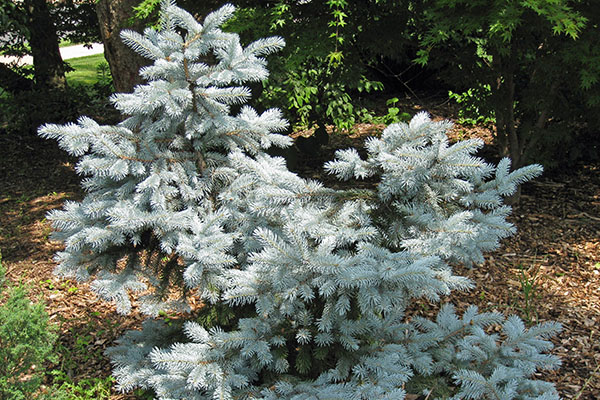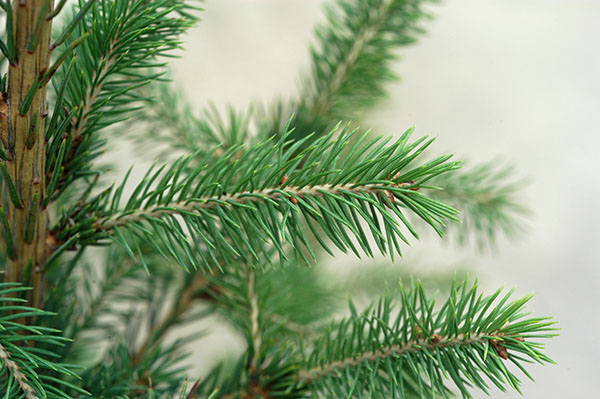Picea pungens
Colorado Spruce
Southwestern U.S., Rocky Mts. from Colorado to Utah to New Mexico, and Wyoming
Pyramidal, dense, horizontal branching; habit is less attractive with age.
Full sun, rich, moist soil.
Picea pungens is native to the Rocky Mountain region of North America. It is a dense, regular narrow to broadly pyramidal conifer with stiff branches to the ground. 30-60 feet in height and 10-20 feet wide are typical dimensions for cultivated plants but wild plants can grow over 100 feet tall. Leaves spread more or less all around the stem, but are more crowded above than below. They're stout, rigid, incurved, and very sharply pointed at the ends. Foliage color varies from dark green to gray green to blue green. Male flowers are orange and female flowers are purple or green. Cones are cylindrical but slightly narrowed at each end, 2 to 4 inches long, green with violet bloom when young and pale shining brown when mature. Picea pungens is very popular as a specimen tree as well as for use in groupings. It is very adaptable and is sometimes overused. A bird-attracting tree.
gray green to blue green
Buds are plump, yellow-brown, loosely-appressed scales.
Furrowed, dark gray.
Male flowers are orange, female flowers are green or purple
Brown to light yellow at maturity. Young cones violet bloom.
Most cultivars are grafted onto seedling understocks, often in January or February in the greenhouse and placed under lath or lined out in the spring.
'Glauca'
'Montgomery'






